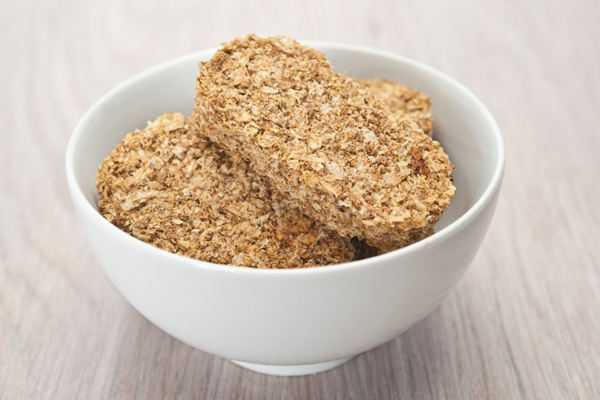Watermelon is a beloved summer fruit, prized for its juicy, sweet flesh. But did you know that the often-discarded rind holds a treasure trove of health benefits? Recent research has shed light on the nutritional value and potential therapeutic properties of watermelon rind, challenging the common practice of tossing it in the compost bin. Let's explore the surprising advantages of this underappreciated part of the fruit and how it can contribute to your overall health and wellness.
Key takeaways:
• Watermelon rind is rich in citrulline, an amino acid with various health benefits
• The rind contains high levels of fiber, vitamins, and minerals
• Potential applications include improving cardiovascular health and exercise performance
• Innovative culinary uses can help reduce food waste and boost nutrition
Citrulline: The star compound in watermelon rind
One of the most significant components of watermelon rind is citrulline, an amino acid that has garnered attention for its potential health benefits. Citrulline is a precursor to arginine, another amino acid that plays a crucial role in various bodily functions[1].
Research has shown that citrulline may have several positive effects on health:
- Cardiovascular health: Citrulline can be converted to nitric oxide in the body, which helps relax blood vessels and improve blood flow. This may contribute to better cardiovascular health and lower blood pressure.
- Exercise performance: Some studies suggest that citrulline supplementation may enhance exercise performance by reducing fatigue and improving endurance[2].
- Erectile function: The nitric oxide-boosting properties of citrulline may also have a positive impact on erectile function, although more research is needed in this area[3].
Nutritional profile: Beyond citrulline
While citrulline is a standout component, watermelon rind offers a range of other nutritional benefits:
- Fiber: The rind is an excellent source of dietary fiber, which is essential for digestive health and can help promote feelings of fullness[4].
- Vitamins and minerals: Watermelon rind contains vitamins A and C, as well as potassium, magnesium, and zinc[5].
- Antioxidants: The rind is rich in antioxidants, including lycopene and flavonoids, which may help protect cells from oxidative stress[6].
Innovative culinary applications
One of the challenges in harnessing the benefits of watermelon rind is finding palatable ways to incorporate it into our diets. However, innovative culinary approaches are emerging:
- Pickled watermelon rind: A traditional Southern delicacy, pickled watermelon rind offers a tangy, sweet-and-sour flavor profile[7].
- Smoothies and juices: Blending watermelon rind into smoothies or juicing it can be an easy way to consume its nutrients without altering the taste significantly.
- Rind-based recipes: Creative chefs are developing recipes that incorporate watermelon rind into dishes like stir-fries, slaws, and even baked goods.
Potential therapeutic applications
Emerging research suggests that watermelon rind may have therapeutic potential beyond its nutritional value:
- Anti-inflammatory properties: Some studies indicate that compounds in watermelon rind may have anti-inflammatory effects, which could be beneficial for various health conditions.
- Blood sugar regulation: Preliminary research suggests that watermelon rind extract may help improve insulin sensitivity and glucose metabolism, although more studies are needed to confirm these effects.
- Antimicrobial activity: Certain compounds in watermelon rind have shown antimicrobial properties in laboratory studies, suggesting potential applications in food preservation or natural medicine.
Sustainability and food waste reduction
Incorporating watermelon rind into our diets not only offers health benefits but also contributes to sustainability efforts by reducing food waste. As consumers become more environmentally conscious, finding uses for all parts of fruits and vegetables is gaining importance.
Conclusion:
The benefits of watermelon rind extend far beyond its citrulline content. From its rich nutritional profile to its potential therapeutic applications, this often-overlooked part of the fruit deserves more attention. By exploring innovative ways to incorporate watermelon rind into our diets, we can potentially improve our health while also contributing to sustainability efforts.
As research in this area continues to evolve, we may discover even more exciting applications for watermelon rind in nutrition, medicine, and beyond. While it's important to note that more studies are needed to fully understand and validate many of these potential benefits, the current evidence suggests that watermelon rind is a valuable resource worth exploring.
Share your comments
Have you tried incorporating watermelon rind into your diet? Share your experiences and recipes with us in the comments below, and let's work together to unlock the full potential of this nutritious fruit part!
References:
[1] https://www.ncbi.nlm.nih.gov/pmc/articles/PMC5078524/
https://www.ncbi.nlm.nih.gov/pmc/articles/PMC5295087/
[2] https://www.ncbi.nlm.nih.gov/pmc/articles/PMC5469050/
[3] https://www.ncbi.nlm.nih.gov/pmc/articles/PMC5153732/
[4] https://www.ncbi.nlm.nih.gov/pmc/articles/PMC6315720/
[5] https://www.ncbi.nlm.nih.gov/pmc/articles/PMC7551445/
Citations:
[1] https://www.ncbi.nlm.nih.gov/pmc/articles/PMC10300363/
[2] https://www.healthshots.com/healthy-eating/nutrition/watermelon-rind-benefits/
[3] https://www.healthline.com/health/food-nutrition/watermelon-rind-benefits
[4] https://www.scirp.org/journal/paperinformation?paperid=122158
[5] https://www.ncbi.nlm.nih.gov/pmc/articles/PMC9027972/
[6] https://www.sciencedirect.com/science/article/pii/S2666149723000403














Member discussion